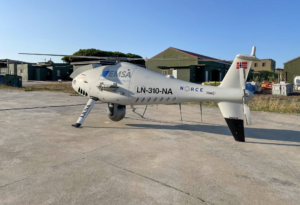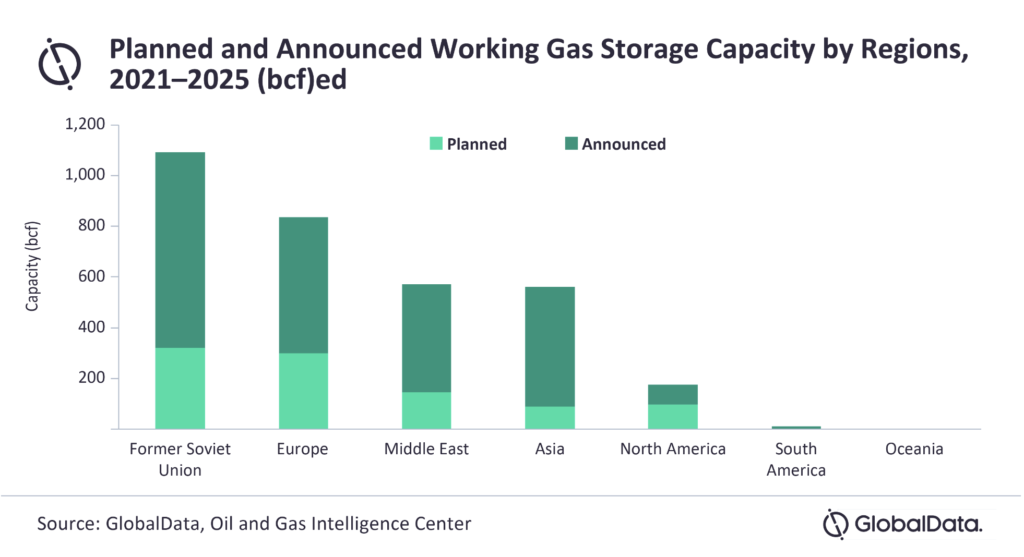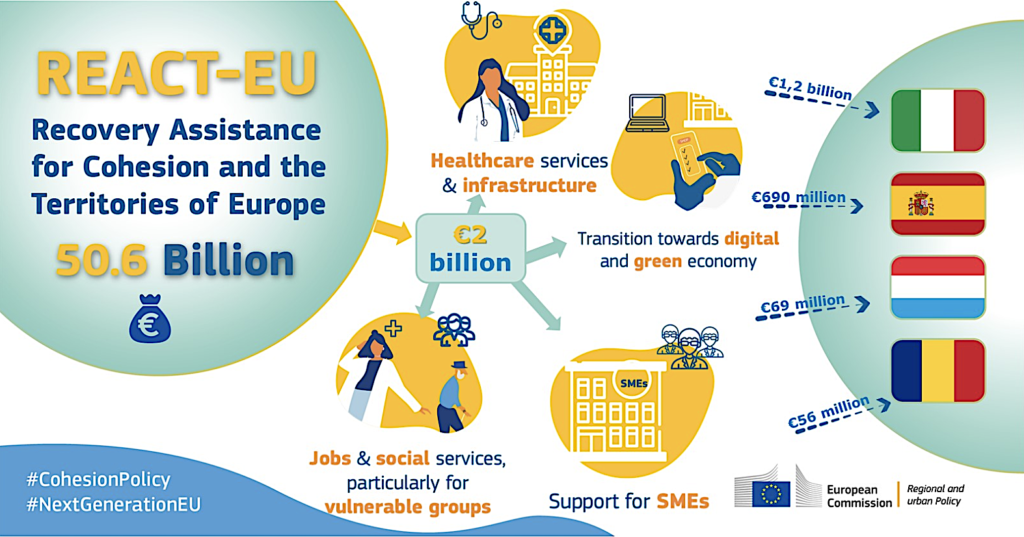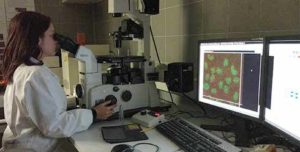COUNCIL OF EUROPE BODY CONCERNED BY THE NON-IMPLEMENTATION BY RUSSIA OF ITS PRIORITY RECOMMENDATIONS ON POLICE COMPLAINTS MECHANISM AND ON ABOLISHING THE SO-CALLED “GAY PROPAGANDA” LEGISLATION

The Russian Federation has not implemented the priority recommendations made in March 2019 by the Council of Europe’s commission against racism and intolerance (ECRI) to set up a body independent of the police and prosecution authorities to investigate all complaints against the police, as well as to abolish the legal ban on the provision of information about homosexuality to minors.
In response to a long-standing recommendation by ECRI to set up an effective police complaints mechanism in the framework of combating racial discrimination in policing, the Russian authorities informed ECRI that they consider control of the police to be already sufficiently carried out by the relevant bodies, in particular the Prosecutor General and subordinate prosecutors, as well as by public associations and bodies, such as the “Public Chamber of the Russian Federation” and public monitoring commissions. “The authorities therefore do not think it necessary to implement ECRI’s recommendation,” the conclusions say.
ECRI regrets this view and underlines the need for a fully independent, professional and trusted police complaints mechanism.
Secondly, ECRI recommended that the Russian authorities abolish the legal ban on the provision of information about homosexuality to minors (legislation on the so-called “promotion of non-traditional sexual relations among minors”), in line with the 2017 judgment of the European Court of Human Rights in the case Bayev and others v. Russia.
The authorities informed ECRI that they consider this recommendation to be “absolutely irrelevant to the legislative system of the Russian Federation”. They have referred to the Constitution of the Russian Federation mentioning the “support, strengthening and protection of the family, [and] preservation of traditional family values” as one of the tasks of the government. In the authorities’ view, “the notion of ‘traditional family values’ obviously does not include the promotion of homosexuality among minors”.
Although ECRI has been informed by civil society groups that the ratio between the number of convictions (payment of fines) and the number of cases opened under Article 6.21 of the Administrative Offences Code has continued to decrease in recent years (according to the Supreme Court, there was one conviction in 15 cases during the first six months of 2020, as compared to four in 20 in 2019), ECRI considers that the ambiguity, potential broad reach and chilling effect of this legal provision continue to be a problem.
Moreover, ECRI is especially concerned about the Russian authorities’ view of this recommendation as “irrelevant”, given the fact that the recommendation is based on a judgment against Russia by the European Court of Human Rights.
The conclusions published by ECRI concern only the two specific recommendations for which priority follow-up was requested; and do not aim at providing a comprehensive analysis of all developments in the fight against racism and intolerance in Russia. This will be the focus of the next full monitoring report expected in 2024.
EMSA’S REMOTELY PILOTED AIRCRAFT ARE ASSISTING SPANISH AUTHORITIES IN ACTIVELY MONITORING SULPHUR EMISSIONS FROM SHIPS TRANSITING THE BUSY STRAIT OF GIBRALTAR

Over the summer EMSA’s remotely piloted aircraft have been monitoring the level of sulphur oxides released by ships transiting the Strait of Gibraltar, one of the world’s busiest shipping lanes. The operation carried out by the Spanish General Directorate of Merchant Marine – under the direction of the Spanish Ministry of Transport, Mobility and Urban Agenda – marks the first time these emissions have been monitored by drone outside the special designated emission control areas in Northern Europe. The flights have been in operation since mid-July from a base in Tarifa and will continue until the end of October.
The project designed to test the effectiveness of drones in measuring pollutant emissions from ships was set up by the Spanish Ministry of Transport, Mobility and Urban Agenda (MITMA), in collaboration with the Algeciras Maritime Captaincy and the General Directorate of Merchant Marine. Using EMSA’s remotely piloted aircraft systems (RPAS), the goal is to detect sulphur oxide emissions above a certain level indicating a possible breach of the International Convention on Maritime Pollution (MARPOL – Annex VI). The current limit for sulphur oxide in ship fuels is 0.50% by mass.
The aircraft used is a CAMCOPTER® S100 and it is under contract to EMSA from the consortium of Nordic Unmanned, Norce and UMS Skeldar. It has several features making it a useful tool for the service, including the ability to take off and land vertically from an area less than 25 square meters, flight endurance of over six hours and a range of more than 100 km. To help detect the gases generated by fuel combustion and expelled through ship funnels, the aircraft is equipped with gas sensors and cameras that cover both optical and infrared spectral ranges.
Since 12 July, the RPAS has been carrying out daily two flights with an average of ten inspections per day. Current figures show that of 294 vessels controlled some 27 were found in possible breach of the limits of sulphur content in their fuel. The measurements and records are automatically encoded in the information exchange system which triggers an alert in the EMSA THETIS-EU database. While this does not confirm non-compliance directly, it does help port authorities target ships for inspection and proceed with the lab testing necessary for any eventual sanctions.
ABOUT RPAS
Remotely Piloted Aircraft System (RPAS) services are offered free to all EU member states by EMSA. They have been developed to assist in maritime surveillance operations and ship emission monitoring, and can operate in all seas surrounding the European Union. RPAS services can provide support to traditional coast guard functions, including search and rescue and pollution prevention and response. The services are offered to member states individually and as part of EMSA’s regional RPAS strategy, which allows multiple coast guard functions in several EU member states to be supported by one or more RPAS services. Further expansion of RPAS regionally is planned in 2021 and 2022.
ABOUT EMSA
The European Maritime Safety Agency (EMSA) is a decentralised agency of the EU, based in Lisbon, Portugal. EMSA serves the EU’s maritime interests for a safe, secure, green and competitive maritime sector, delivering value for member states through support for pollution prevention and response, maritime surveillance, safety and security, digitalisation and the provision of integrated maritime services, and technical assistance.
EUROPOL’S ‘SAY NO!’ CAMPAIGN TRAVELS TO THE WESTERN BALKANS

A simple photograph could turn into a never-ending cycle of blackmail for money, sex, or worse. Youngsters across the Western Balkans will now have access to Europol resources in their own language to recognise and protect themselves against this worrying online phenomenon, sometimes referred to as sextortion.
In the framework of the European Multidisciplinary Platform Against Criminal Threats (EMPACT), Slovenia, Croatia and Europol’s European Cybercrime Centre have teamed up to establish an expert network in the Western Balkans with the goal to strengthen cross-border cooperation in the fight against child sexual abuse. A strategic report is being drafted on the state of play of the fight against this horrendous crime in the region.
To complete the efforts, Europol’s ‘Say No!’ video has been translated into the national languages of Serbia, Montenegro, North Macedonia and Bosnia and Herzegovina. The video will there be shared with parents, children and teachers to raise awareness in the Western Balkans about child sexual abuse.
This 10-minute video portrays two teenagers, a boy and a girl, being exploited online by a criminal organisation for financial gain and by an individual online sexual offender seeking further sexual material, respectively. The video includes advice as to how such crimes may be reported to law enforcement and how to avoid falling victim in the first place.
The #SayNo! campaign was launched in 2017 by European law enforcement to provide advice to those who have been, or are likely to fall victim to online sexual coercion and extortion and to strengthen reporting and support mechanisms.
The video is now available in the languages of the following 29 countries: Austria, Belgium, Bulgaria, Croatia, Czech Republic, Denmark, Estonia, Finland, France, Germany, Greece, Hungary, Ireland, Italia, Latvia, Lithuania, Malta, the Netherlands, Poland, Portugal, Romania, Slovakia, Slovenia, Spain, Sweden, Bosnia and Herzegovina, Moldova, Montenegro, North Macedonia, Norway, Serbia, Switzerland, Ukraine and the United Kingdom.
FORMER SOVIET UNION EXPECTED TO LEAD GLOBAL WORKING GAS CAPACITY ADDITIONS BY 2025

The Former Soviet Union (FSU) is expected to lead the global planned and announced working gas capacity additions, contributing approximately 34% of the total global capacity additions by 2025, says GlobalData, a leading data and analytics company.
The company’s report, ‘Global Capacity and Capital Expenditure Outlook for Underground Gas Storage, 2021–2025 – Gazprom to Drive Global Working Gas Capacity Growth’, reveals that the FSU is expected to witness the highest capacity additions globally from planned and announced projects during the outlook period 2021 to 2025 with 1.1 trillion cubic feet (tcf).
Bhargavi Gandham, Oil and Gas Analyst at GlobalData, comments: “Russia and Uzbekistan primarily drive working gas capacity additions in the FSU by 2025. Both countries are building the underground gas storage sites to effectively meet domestic peak natural gas demand. The proposed projects also help them to increase gas exports as well through pipelines.”
GlobalData identifies Europe as the second highest contributor to global working gas capacity additions, accounting for around 26% of the total additions by 2025. The Deborah depleted oil and gas field in the UK drives the planned working capacity in the region with 174.5 bcf by 2025. Eni SpA is the operator as well as 100 percent equity holder of the project.”
The Middle East ranks third globally contributing roughly 18% of global working gas capacity additions during the outlook period. Tuz Golu II in Turkey drives the planned working gas capacity additions in the region with 148.3 bcf by 2025.
COMPUTERIZED FACIAL RECOGNITION IS A RELATIVELY NEW TECHNOLOGY, BEING INTRODUCED BY LAW ENFORCEMENT AGENCIES AROUND THE WORLD IN ORDER TO IDENTIFY PERSONS OF INTEREST.

The Interpol Face Recognition System (IFRS) contains facial images received from more than 179 countries which makes it a unique global criminal database.
Coupled with an automated biometric software application, this system is capable of identifying or verifying a person by comparing and analysing patterns, shapes and proportions of their facial features and contours.
Almost 1,500 terrorists, criminals, fugitives, persons of interest or missing persons have been identified since the launch of Interpol’s facial recognition system at the end of 2016.
Factors in facial identification
Unlike fingerprints and DNA, which do not change during a person’s life, facial recognition has to take into account different factors, such as:
- Ageing
- Plastic surgery
- Cosmetics
- Effects of drug abuse or smoking
- Pose of the subject
Working with good quality images is also crucial. Low or medium quality images may be not searchable in the IFRS system and, if they are, the accuracy of the search and the results themselves can be significantly affected.
An ICAO standard passport photo would be ideal, since this is a frontal image of the subject that has even lighting on the face and a neutral background.
How does it work?
When a facial image (probe image) is entered into the system it is automatically encoded by an algorithm and compared to the profiles already stored in the system. This results in a ‘candidate’ list of the most likely matches.
A manual process is always carried out, known as Face Identification, to verify the results of the automated system. Qualified and experienced Interpol officers examine the images carefully to find unique characteristics that can lead to one of the following results: ‘Potential candidate’, ‘No candidate’ or ‘Inconclusive’.
This information is then passed on to the countries that provided the images, and to those that would be concerned by the profile or a match. All information is handled in line with Interpol’s Rules on the Processing of Data.
Cross-checking with INTERPOL Notices
All face images in Notices and Diffusions requested by member countries are searched and stored in the face recognition system, provided they meet the strict quality criteria needed for recognition.
Member countries can also request a ‘search only’ in the face system, for example, to carry out a check on a person of interest at airports or other border crossings. The results are returned quickly to enable immediate follow-up action, and images are not recorded in the system.
Bringing experts together
As this computerized biometric comparison technology is still in its infancy in most countries, standards and best practices are still in the process of being created, and Interpol is contributing to this.
Held every two years, Interpol’s International Fingerprint and Face Symposium provides an opportunity for experts from around the world to share best practice and latest developments.
We also host meetings of the Face Expert Working Group twice a year. This is Interpol’s advisory group for new technology, identification procedures, training needs and for producing official documents to assist member countries in this field.
The Expert Group produced a best practice guide for the quality, format and transmission of facial images to promote accurate and effective recognition. We strongly encourage our member countries to use the facial recognition service and to follow the recommendations.
Developing best practices
While facial recognition systems have huge potential for national safety and security, they require a robust governing structure in order to protect human rights and personal data.
Interpol, along with the World Economic Forum (WEF), the United Nations Interregional Crime and Justice Research Institute (UNICRI) and Netherlands Police, co-designed a policy framework to promote the responsible and transparent use of facial recognition technology in law enforcement investigations.
The result of a global, multi-stakeholder consultation, this white paper was published in October 2021. Interpol will raise awareness of the initiative via its global membership and the framework will be tested by law enforcement agencies in the first quarter of 2022.
NEW OPERATION TO PROTECT NEXT GENERATION EU RECOVERY FUNDS

Launched at Europol, Operation Sentinel will contribute to a concerted response to an expected fraud wave
A new EU-wide operation will target fraud against COVID-19 EU recovery funds being offered under the framework of the NextGenerationEU initiative. Operation Sentinel, launched on 15 October 2021 at Europol’s headquarters, involves the European Public Prosecutor’s Office (EPPO), Eurojust, the European Anti-Fraud Office (OLAF) and 19 EU Member States*. The activities will run for at least a year and will focus on proactive intelligence sharing, information exchange and supporting the coordination of operations to tackle fraud against COVID-19 EU recovery funds.
Europol’s Executive Director Catherine de Bolle said: ‘The COVID-19 pandemic has profoundly affected our social and economic structures globally. NextGenerationEU, part of the largest stimulus package released in the European Union, will support Member States adversely impacted by the COVID-19 pandemic. Preventing serious cross-border crime is at the heart of Europol’s mandate, and we are fully committed to supporting the Member States in fighting any attempt by organised crime to infiltrate the EU legal economy and the NextGenerationEU fund. Our message is clear: any threat to the NextGenerationEU is a direct threat to the financial well-being of the European Union and its people. Operation Sentinel will strengthen our joint response to fraud and protect the reconstruction of our communities.’
Ensuring the € 806.9 billion fund is directed towards resilience
Through NextGenerationEU, the European Union will release a total of € 806.9** billion to support EU Member States in repairing the negative economic and social effects of the COVID-19 pandemic. The larger part of this funding, equivalent to € 723.8 billion, will be released in loans and grants to support investments focused on greener, more sustainable and more resilient societies. Recent experience from the evolution of the criminal landscape during the COVID-19 pandemic suggests these efforts will attract criminal groups active in the European Union and beyond. Criminals have shown themselves to be quick in adapting to the pandemic and its impact, and they are using every opportunity to maximise illegal profits. Therefore, Europol has set up Operation Sentinel to anticipate the expected wave of fraud against these recovery funds. For this purpose, Europol will establish a dedicated internal mechanism to process operational data, steer information exchanges and support ongoing cases. The joint activities will target fraud, as well as tax evasion, excise fraud, corruption, embezzlement, misappropriation and money laundering. Four EU entities and authorities from 19 EU Member States have joined forces as part of Operation Sentinel to ensure the recovery funds are directed towards strengthening our economies and the resilience of our communities.
*Participating countries
Austria, Belgium, Croatia, Denmark, Estonia, Finland, France, Greece, Ireland, Italy, Lithuania, Malta, the Netherlands, Poland, Portugal, Romania, Slovenia, Spain, Sweden
**This figure is in current prices. It amounts to €750 billion in 2018 prices.
TRIAL OPERATION UNDERWAY FOR NORTH SEA LINK

Today, trial operation begins on the world’s longest subsea interconnector, the North Sea Link between Norway and the United Kingdom. This means that the two countries can exchange electricity for the first time. The interconnector will contribute to the European energy transition by facilitating for more renewable energy production on both sides of the interconnector.
From 9 am CET today, electricity will be transferred via the North Sea Link interconnector, which runs between Suldal municipality in Norway to Blyth in Northumberland, England. A three-month trial period is now starting on the 720 km long interconnector.
– This is an important milestone. The world’s longest subsea electrical interconnector is starting trial operation and connects the British and Norwegian power systems directly for the first time, says CEO Hilde Tonne in Statnett.
– This interconnector will facilitate more renewable production in both countries. Connections between countries and areas are a prerequisite for the energy transition in Europe and improves security of supply. It ensures access to power even when there is little water in the reservoirs or when the wind does not blow, Tonne continues.
Two new cables in one year
This is the second subsea interconnector Statnett will start with transmission of power in less than a year. The NordLink cable between Norway and Germany went online this winter.
– If we are to achieve the green change of pace with increasing electrification and an increasing need for renewable energy, we will have to cooperate across national borders and take advantage of differences between our various power systems. This is the only way we can achieve a zero-emissions society based on renewable energy resources. Exchange of electricity is profitable for Norway and we have been connected with the countries around us since the 1960s, says Tonne.
North Sea Link is built for a capacity of 1,400 MW. It begins trial operation with a capacity of up to 700 MW and will be gradually phased in throughout the trial period.
– It is important that the trial operation takes place in a way that safeguards the operation of the Norwegian power system. During the trial period, we get to test the interconnector in close to normal operational conditions, as well as the market solution when the two markets are connected for the first time, says Tonne.
Interconnectors will probably on average contribute to a somewhat higher electricity price for Norway, but they also give access to more power that will improve security of supply, and in some cases curb peak prices. The price for electricity in Norway will on average continue to be lower than the price in other European countries in the years to come. At the same time, revenues from trading over the interconnector will cover investments in the Norwegian grid that would otherwise have been financed by Norwegian consumers over the grid tariffs.
REACT-EU: COMMISSION APPROVES €2 BILLION OF ADDITIONAL RESOURCES FOR THE RECOVERY IN ITALY, SPAIN, LUXEMBOURG AND ROMANIA

The Commission has granted €2 billion to Italy, Spain, Luxembourg and Romania following the modification of two European Regional Development Fund, one European Social Fund (ESF) and one Fund for European Aid to the Most Deprived Operational Programmes (OP) under the Recovery Assistance for Cohesion and the Territories in Europe (REACT-EU).
In Italy, the national OP ‘Governance and Institutional Capacity’ will receive a total of €1.2 billion. Of this sum, €761 million will go towards buying 68 million doses of vaccines against the coronavirus. In the Southern regions, authorities will use €374 million to hire new public healthcare workers and cover the costs of extra hours worked by workers currently in the system. €108 million will help strengthen the administrative capacity of national and regional authorities, including in the healthcare system.
In Spain, ‘Comunidad Valenciana’ will receive additional resources of €690 million to provide, amongst others, working capital to the most affected Small and Medium-sized Enterprises, and to reinforce health, social services and investments in basic infrastructure for citizens, including in the health and education sectors.
Luxembourg will receive €69 million to support large-scale coronavirus testing and the acquisition of vaccines, and investments in sustainability such as the electrification of the national bus network.
In Romania, €56 million will be invested to provide material support for disadvantaged groups, such as hot meals, assistance to disadvantaged children with school supplies and to disadvantaged mothers with essential kits for their newborn babies.
REACT-EU is part of NextGenerationEU and provides €50.6 billion additional funding (in current prices) over the course of 2021 and 2022 to Cohesion Policy programmes.
3D TUMOUR MODELLING DEVELOPED IN ITALY, AUSTRIA FOR PERSONALISED CANCER THERAPY

Precision cancer medicine is a therapeutic approach that allows doctors to provide treatment genetically tailored to an individual patient’s tumour. The PreCanMed project gathered five cancer research centres of excellence in Friuli-Venezia Giulia, Italy, and Tirol, Austria, to establish a platform for precision cancer treatment. This is an important step towards more efficient, personalised therapies for people with cancer
reCanMed implemented an interregional technological platform for the generation and cryo-conservation of 3D tumour organoid models from human tumour tissue; genomics analysis to reveal genetically driven tumour dependencies and vulnerabilities; testing the efficiency of therapeutic approaches on tumour organoids; and generating shared resources of SOPs, biological material and data for precision cancer medicine. ” Stefan Schoeftner, Associate Professor, Department for Life Sciences, University of Trieste The PreCanMed partners investigated patient-derived tumour organoid technology, a powerful tool that allows the study of normal and diseased cancer tissues for the development of bespoke treatments. Tumour organoids are 3D cell culture models, generated from patient tissue, that can be grown in the laboratory and precisely replicate the characteristics of the original tumour. The project has laid the foundations for widespread future use of this technology and will accelerate understanding of multiple aspects of cancer, contribute to treatment breakthroughs and help realise the potential of personalised medicine.

While significant progress has been made in the treatment of cancer, established standard therapy protocols remain ineffective for many patients, and some tumours remain difficult to treat. This results in socioeconomic stress for national health systems and distress for patients and their families. To address this challenge, PreCanMed researchers integrated and improved on existing knowledge in the development of patient-derived tumour organoids from breast, lung and colon carcinomas. They collected samples during surgeries and biopsies and identified the best conditions for their growth, and established a platform for generating reliable, patient-specific models of the disease accessible to the R&D sector. Although still in an early phase of development, research on tumour organoids holds great promise. Patient-derived tumour organoids accurately replicate tumour histology, molecular subtypes and response to treatments. They can be generated and propagated efficiently, and frozen in liquid nitrogen to be recovered later for further use. Use of genomics and tumour organoids allows scientists to test patient-specific therapeutic approaches in the lab and compare their efficiency with standard cancer therapy in vitro. The project has trained young researchers and informed experts and the public about the importance of precision medicine. A further important aspect of PreCanMed is the creation of a living biobank of patient-derived tumour organoids. Each one represents a personal, developing model of the disease and enables experimentation at the single patient level in ways that have previously been impossible, ultimately promising more effective, personalised cancer treatment.


